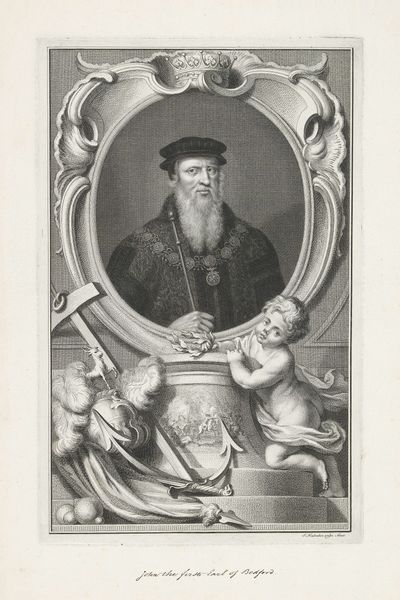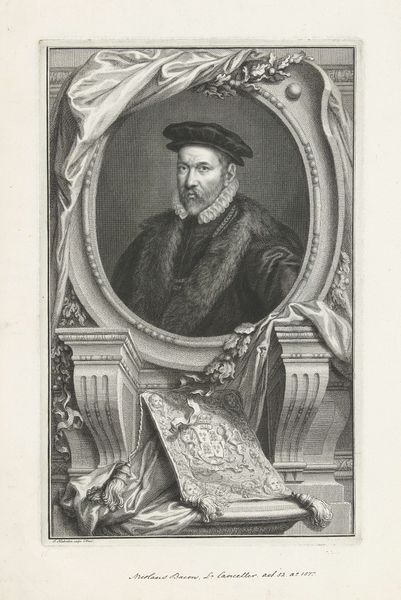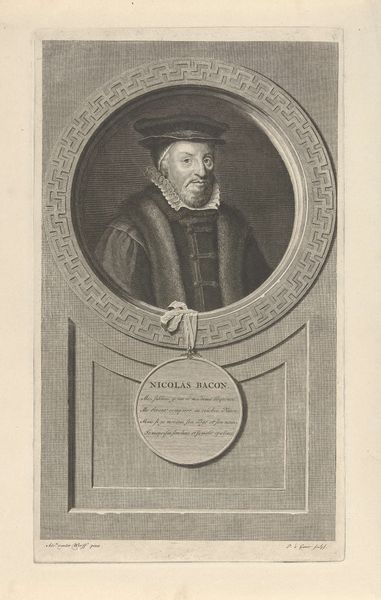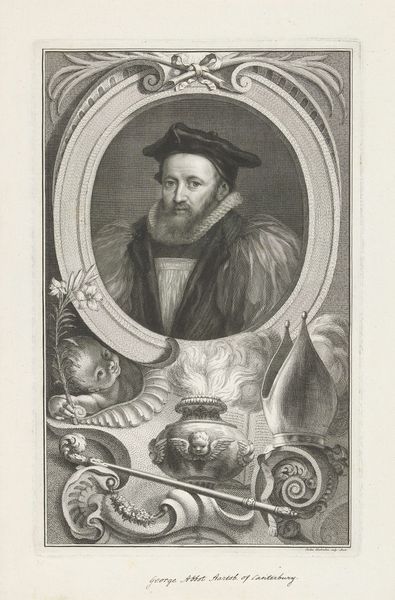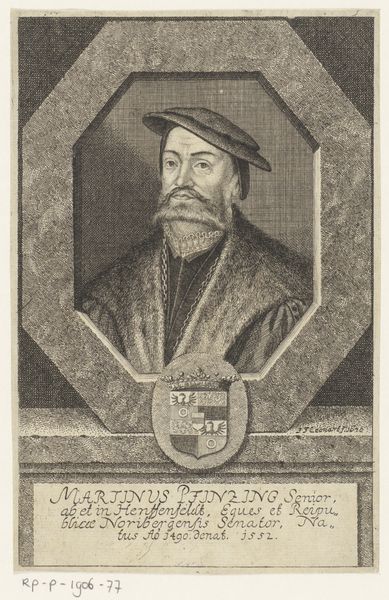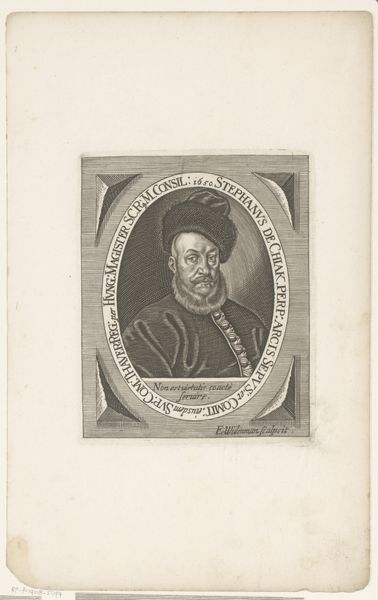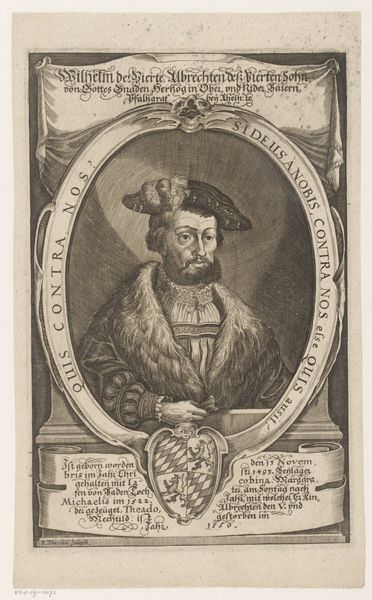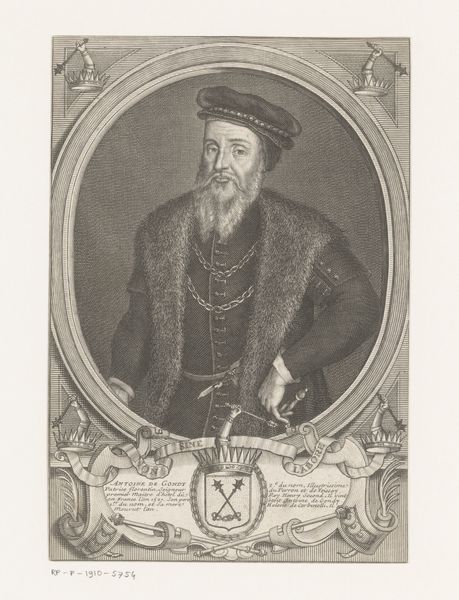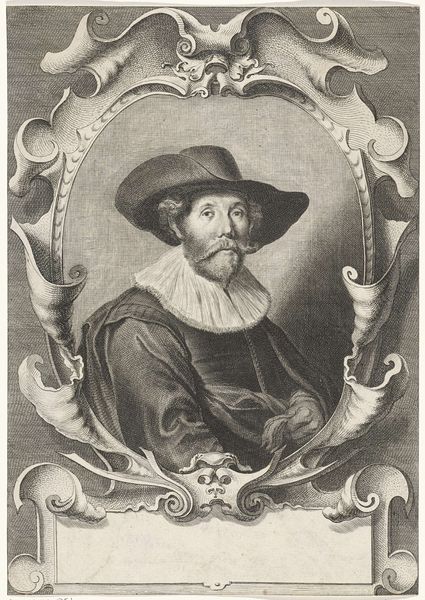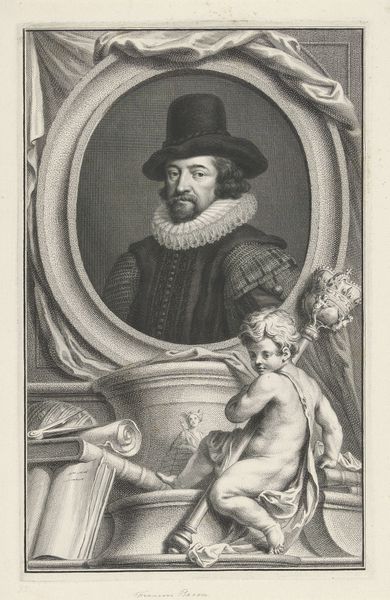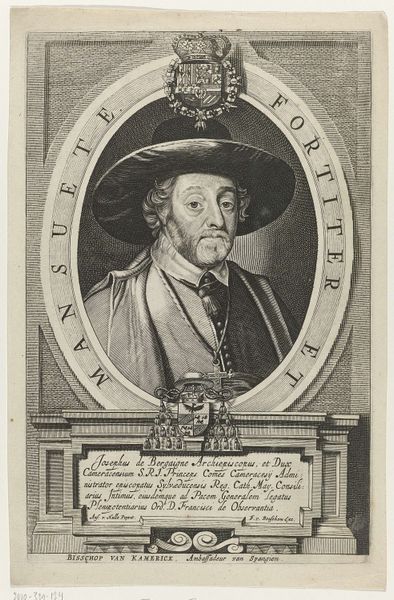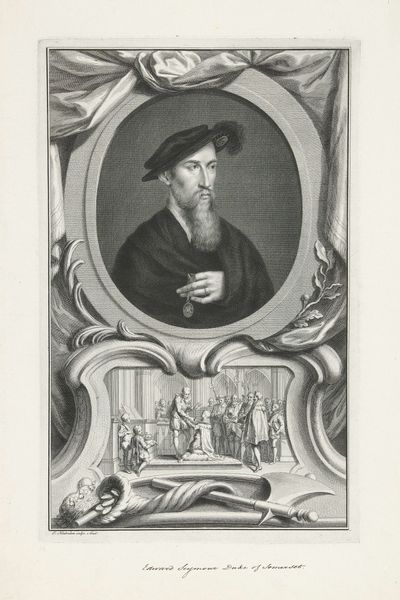
print, engraving
#
portrait
#
baroque
# print
#
old engraving style
#
figuration
#
form
#
pencil drawing
#
line
#
history-painting
#
engraving
Dimensions: height 372 mm, width 236 mm
Copyright: Rijks Museum: Open Domain
Editor: This is "Portrait of Thomas Smith," a 1743 engraving by Jacob Houbraken, held at the Rijksmuseum. It has this very classical, formal feel. What strikes me is how much work must have gone into creating the fine lines, the detail in the face, and the intricate frame. How do you interpret this work? Curator: Well, as a print, its purpose goes beyond mere artistic expression. Consider the engraving process. Each line etched by hand represents a deliberate act of labor, a choice influencing the distribution and consumption of this image within 18th-century society. Editor: So, you're saying the value isn't just in the aesthetic but in its production? Curator: Precisely. Look at the materials: the copper plate, the paper, the ink. These are commodities within a developing capitalist system. Each impression made democratizes access to the image, to knowledge, perhaps even to power. How does this wider distribution alter perceptions of portraiture and fame? Editor: That’s interesting. I guess I was thinking about it more as a representation of an individual. Curator: The ‘individual’ is constructed through material processes. How does the repetitive labor involved in printmaking – transforming a unique painting into a reproducible commodity – impact our understanding of artistic genius? Think about it: this isn’t just an image of a man, but an object produced within specific economic and social relations. Does it change your understanding to think of it as an artifact of its own time? Editor: Definitely. I never really thought about the implications of making multiple copies like that. Curator: By understanding its materiality and the means of its production, we unveil its ideological underpinnings and gain insights into 18th-century Dutch society. The image then speaks of broader material networks that support not only art making, but also cultural ideas.
Comments
No comments
Be the first to comment and join the conversation on the ultimate creative platform.
